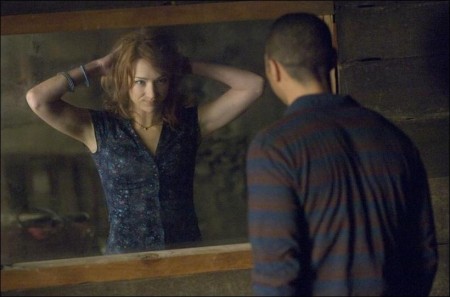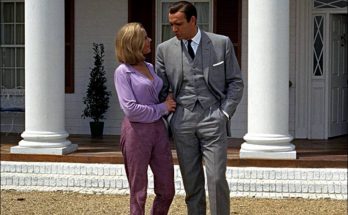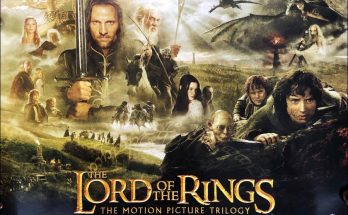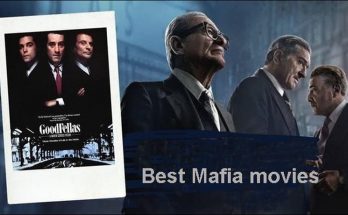The Cabin in the Woods: You think you know the story. Sprung from the fertile imaginations of cult filmmakers Joss Whedon (“Buffy The Vampire Slayer,” “Dollhouse,” The Avengers) and Drew Goddard (Cloverfield, “Buffy The Vampire Slayer,” “Angel,” “Lost”), Lionsgate’s The Cabin the Woods begins like any generic horror film might: a rambunctious group of five college friends steal away for a weekend of debauchery in an isolated country cabin, only to be attacked by horrific supernatural creatures in a night of endless terror and bloodshed. Sound familiar? Just wait.
As the teens begin to exhibit standard horror movie behavior, a group of technicians in a control room are scrutinizing, and sometimes even controlling, every move the terrified kids make. The story behind their involvement is just the tip of the iceberg of a fantastical, I-can’t-believe-this-is-happening odyssey that explodes the conventions of the horror genre in a giddy sugar rush of bloody mayhem, wild imagination and sly humor.
Explains Goddard, “On one level, CABIN functions as your classic horror film. It’s the sort of movie where you grab your popcorn and hold your date tight while you watch five teenagers head to the woods and encounter terrible things. But it’s also our version of that type of movie. Which means things get a lot more insane than you might expect.”
Actor Chris Hemsworth, known to most audiences as the titular hero in last summer’s hit, Thor, remembers the first time he read Goddard’s and Whedon’s script. “At first I thought, Oh, this is a regular horror movie. I don’t get it. And then it just continued to unfold and open up and blow me away every page. It just got crazier and crazier and crazier until – well, until never. It just doesn’t stop. It leads you down a path that seems recognizable, and slowly it completely subverts everything you know.”
Goddard and Whedon have crafted a love letter to the horror genre that pays homage to fright classics ranging from Sam Raimi’s Evil Dead to Dario Argento’s Suspiria. But while it clearly respects its predecessors, THE CABIN IN THE WOODS also questions the very tropes it’s re-enacting. “I love horror,” explains Whedon. “But the plots are becoming more and more predictable. The killings are more and more disgusting. The kids are becoming more and more expendable. And more love is put into the instruments of torture and no love at all is put into the dialogue polish. The ritual of it is getting cheapened.”
The first hint that this is not your average horror movie comes with the casting of veteran actors Bradley Whitford and Richard Jenkins, who play control room bosses Hadley and Sitterson. The two men, using a range of influential technology, force the five friends to embody horror stereotypes. While the kids might start out as more than most contemporary horror victims, they become increasingly powerless to resist Sitterson’s and Hadley’s ideas of how they should behave. “The control room bosses are a stand-in for us, the viewer,” explains Whedon. “But they also represent everything that we’re up against as storytellers: the need to hurt kids more and more on screen, to make them behave foolishly, to make the death of them the points as opposed to the suspense leading up to it.”
“I think the danger with horror films is that they often treat the audience as idiots,” suggests Hemsworth. “This film respects the audience by questioning our desire for horror films to begin with.”
Whedon admits he’s fascinated by this question. Why do we love horror movies so much? “There’s some part of us, some deep, dark, primitive part of us that wants to sacrifice these people onscreen. I wanted to make a movie that explained why. And so it’s been a strange experience because on the one hand, we do straight up horror. We definitely love the genre and the tropes of the genre but at the same time we have a lot of questions about why and where it’s going.”
Goddard adds, “The horror movie is merely the jumping-off point for the inherent questions about humanity that the genre suggests. Why, as a people, do we feel the need to marginalize, objectify, and destroy youth? And this is not specific to the genre, or movies in general, or our present-day culture. We’ve been doing this to youth since we first began as a people. And this question — the question of why — is very much at the heart of CABIN.”
Drew Goddard and Joss Whedon first met when Goddard was hired as a writer on Whedon’s seminal television hit, “Buffy the Vampire Slayer.” A fruitful creative partnership – and a strong friendship – formed, and the two filmmakers have worked together consistently ever since. Along the way, THE CABIN IN THE WOODS was born.
“Joss came up with the initial idea – we were looking for something to write together, and he had this concept kicking around in his head. And as soon as I heard the words ‘cabin movie,’ I said, ‘I’m in.” The two worked together to develop the idea, and wrote the script quickly while on hiatus from their various day jobs.
Once the script was completed, the film was greenlit by MGM Studios, thanks to the support of producer Mary Parent. But due to corporate changes, the studio was unable to continue with the film, making the way for Lionsgate to step in. “You always want your movie to find the right home,” says Whedon, “and there’s no question that Lionsgate is the right home for CABIN. So many of the films that inspired CABIN were released by Lionsgate in the first place!”
Adds Goddard, “With some places, there’s a bit of a horror disconnect, but with Lionsgate I can say something in a meeting like, ‘I’m thinking it should be red, but not The Descent red, more High Tension red,” and they don’t look at me like I’m insane. It definitely feels like we’re speaking the same language. They’ve been wonderful.”
Goddard’s and Whedon’s goal was to cast the film with a mixture of established actors, new faces, and “Whedonverse” veterans, and that’s exactly what casting directors Amy Britt and Anya Colloff, who had worked on both “Buffy The Vampire Slayer” and “Angel,” set out to accomplish. But the casting process was not without its difficulties. “We ask a lot of our performers,” Goddard points out. “We ask them to vacillate between broad comedy and intense emotional drama. And often, it’s in the same scene – the same sentence, even. It’s very hard to find actors who can shift gears so quickly, the way we ask them to.”
From the beginning, Goddard had dreamed of casting Richard Jenkins in the role of control room boss Sitterson. After sending Jenkins the script on a Friday night, the phone rang on Monday morning with Jenkins’ enthusiastic commitment to the project.
“I just loved the twists. I loved the take on it. It’s fearless,” says the actor. “The control room is pretty mundane, you know. It’s like, just the guys in the office. And then you see what they’re working on and it’s bizarre. It’s just so great to throw those two worlds together.”
Jenkins’ acceptance quickly invigorated the rest of the casting process. Bradley Whitford committed soon after for the role of Hadley, which left Goddard marveling at their good fortune. “Both actors were our wildest dreams, and they were the first people in it,” he says.
Recalls Whitford, “I thought at first it was a sort of grade A, Defcon 5 horror movie. But the more I thought about it, there was something very funny and smart about it. It’s such a clever way to deal with this genre. You see with Hadley how the relentlessness of his job, and dealing with violence all the time, cuts him off from a real experience of it.”
In order to protect the story and its secrets from being revealed in the blogosphere, the script was kept under tight wraps and the filmmakers wrote fake sides when auditioning the remaining principals, which of course became its own entertaining exercise. Remembers Whedon, “In Curt’s case, it was a pterodactyl movie; in Holden and Jules’ scene, about tentacles in a Jacuzzi; Marty had a monologue about something made entirely of claws. So basically, it was take the exact character that you’re looking for and then put him or her in a different movie.”
The Cabin in the Woods
Directed by: Drew Goddard
Starring: Richard Jenkins, Kristen Connolly, Anna Hutchison, Amy Acker, Bradley Whitford, Jesse Williams, Chris Hemsworth, Fran Kranz
Screenplay by: Joss Whedon, Drew Goddard
Production Design by: Martin Whist
Cinematography by: Peter Deming
Film Editing by: Lisa Lassek
Set Decoration by: Hamish Purdy
Costume Design by: Shawna Trpcic
Art Direction by: Michael Diner, Kendelle Elliott, Tom Reta
Music by: David Julyan
MPAA Rating: R for Strong bloody horror violence and gore, language, drug use and some sexuality / nudity.
Studio: Lionsgate Films
Release Date: April 13, 2012
Related Link: View the Full Production Notes for The Cabin in the Woods
Views: 105




